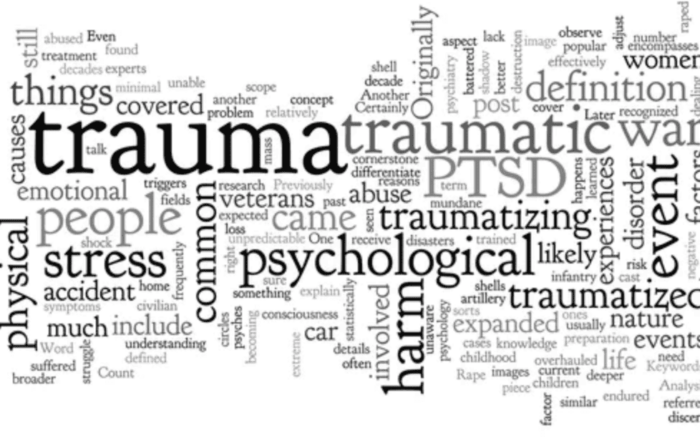Interview with June Groden, Ph.D.
 Dr. June Groden is considered one of the pioneers in the field of autism and developmental disabilities. Her primary areas of interest are stress and anxiety and procedures to reduce stress. She has focused on the development of relaxation and imagery-based procedures for a population with autism and developmental disabilities. Dr. Groden is the Director of the Groden Center in Providence, Rhode Island.
Dr. June Groden is considered one of the pioneers in the field of autism and developmental disabilities. Her primary areas of interest are stress and anxiety and procedures to reduce stress. She has focused on the development of relaxation and imagery-based procedures for a population with autism and developmental disabilities. Dr. Groden is the Director of the Groden Center in Providence, Rhode Island.
The Groden Center provides community-based evaluative, therapeutic, educational, and vocational programs for children and adults who have or are at risk for moderate to severe behavioral/emotional problems, including autism. Dr. Stephen M. Edelson (SE) interviewed Dr. June Groden (JG) on November 13, 1996.
SE: Could you tell us a little bit about your background?
JG: I have a bachelor’s degree in business administration, a master of education and a master of arts in psychology and a Ph.D. in psychology. The combination of education and psychology is helpful in combining both the academic and behavioral programs since behavioral problems are often affected by the appropriate curriculum or vocational programs. My interest in stress reduction arose from the work I had done earlier in self-management and self-control, and I felt that it was important to look at inner behavior in addition to overt behavior. I had studied the work of Joseph Cautela, Ph.D. at Boston College and went to study with him for the specific purpose of adapting the procedures he developed which he labeled as Covert Conditioning to use with the population with autism and developmental disabilities. We are still working together to continually refine and expand these procedures. He is the co-author of the Relaxation Manual and has been part of developing the videos, Breaking the Barriers: I and II which feature the relaxation and imagery procedures.
SE: Since you are considered an expert in the areas of relaxation and visual imagery, could you describe your work so our readers will have a better idea of what is involved and what they might expect?
JG: The relaxation program that we use involves progressive relaxation developed by Edmund Jacobson. Basically, this program involves teaching consumers how to discriminate between tense muscles and relaxed muscles. Children and adults are taught the relaxation procedure, usually in a one-to-one teaching session lasting for as long as the participant can maintain attention. This usually ranges from a few minutes to twenty minutes. The practice session is a regularly scheduled event built into the person’s schedule. The person learns to tighten and relax the arms, hands, and legs, and to do deep breathing in a sitting position. The child or adult is then taught relaxing without tensing. Finally, the person is taught to tighten and relax all remaining muscle groups of the body.
After the person has mastered the relaxation procedure, we administer a stress survey which I have developed and which helps to identify stressful situations. Once these stressful situations have been pinpointed, the client can then use coping strategies, such as relaxation or imagery to reduce their stress. The relaxation program can also be used to develop self-control by the individual learning to make a relaxation response in place of the typical maladaptive behavior he or she exhibits during stressful situations.
The imagery programs utilize visual imagery and/or a procedure we call picture rehearsal. After conducting a functional analyses of behavior (this is described in our book Understanding Challenging Behavior), a script is written which utilizes the information from the analyses. For procedure rehearsal programs, line drawings or photographs depict the antecedent event, the targeted behavior and the consequences. For visual imagery alone, just the script is read without the pictures. Often relaxation is incorporated into the scene. An example of a scene which targets bedtime behavior might be: “You are watching TV and mother says, It’s time to go to bed. You take a deep breath and relax and say okay, I will get into my pajamas. You feel proud you were so cooperative. Now imagine your mother reading your favorite book before you get in bed.” The mother, therapist or teacher describes the scene first and then the child or adolescent repeats it either verbally or by pointing to each picture.
SE: During a recent lecture of yours, you mentioned that imagining a reward could be as effective as actually receiving the reward. I thought this was a very interesting concept, and it could be an extremely important behavioral tool.
JG: There is some evidence to suggest that at times the effects of observable behavior and imagined behavior can be similar. Studies by K.D. Brownell, D. H. Barlow and A.E. Kazdin support this. We have also observed our children and adults smiling when they imagine a reinforcer or swallowing when they imagine eating a favorite food. It has a great impact on the use of imagining for therapy since it is possible to create many different situations, places and reinforcers without actually being there.
SE: Could you describe a couple of individuals who benefited from your program?
JG: There is a person in our adult program who had lived in a state hospital where he had a two-on-one staff ratio around the clock. He was also receiving a very heavy dosage of medication. When he arrived at our program, he could not even be in a room with other people. He had to be placed alone because he was extremely aggressive. We started working with him, one-on-one or two-on-one; and we started teaching him relaxation as a way to control himself. At first, he did not want to use relaxation with a staff person, so we recorded the relaxation procedure on an audiotape. He would listen to the tape but he would often break the tape. Over time, he started using the tapes and doing the relaxation procedure. We then started to identify situations for him in which he was anxious so he could learn to relax himself using the relaxation procedure.
We also identified situations that were antecedent to some of his tantrums. We did a thorough functional analysis of his behavior, and we were able to determine precursors to situations in which he would become aggressive. We then developed several imagery scenes which we put on index cards. It is the procedure I just described called picture rehearsal. We used the cards to rehearse more appropriate behavior. We were also able to get him involved in a vocational training program and an academic program. In about six months he reduced his aggressive behaviors, and we then transferred him to the adult vocational program. Now, seven years later, he is in a group home where he has a separate apartment. He has a job and uses public transportation independently. Although he is doing very well, he still has a few episodes where he may break items, usually his own; but his aggression has not been towards other people or himself. He has changed dramatically and people who knew him at the institution and meet him now cannot believe the difference. This case is more fully described in the Covert Conditioning Casebook (Cautela & Kearney, 1993). Reprints are available from me.
In another case, we worked with a 3-year old boy who was diagnosed as having autism. He did not interact with other children, and he had very little language at that time. We started working with him in a regular nursery school. I was the consultant on this case, and he had a teacher aide who worked with him one-on-one in addition to the other teaching staff. The main part of the program was teaching him the relaxation procedure and using picture rehearsal. We also taught his parents the relaxation procedure, and they were able to use this procedure with him at home. After a short time, every time he became anxious, the staff member cued him and he was able to relax immediately. We also identified situations which caused him to become anxious and incorporated these events into the picture rehearsal program. The picture rehearsal scenes identified events that made him uncomfortable and illustrated how to behave and act more appropriately. We worked with him from preschool through kindergarten and first grade. When he got into first grade, the teacher thought the relaxation procedure was very helpful and requested it be taught to the entire class. When he continued into the second grade, that class also performed the relaxation procedure everyday. Eventually, he started developing his own imagery scenes; and by the third grade, he was doing so well that we began reducing the amount of time he spent with his aide. By fifth grade he did not need special services any more. He is now in a regular high school, and he is the junior class president. This is a real success story, and I do not think anybody would be able to pick him out as having autism.
Let me describe another case. We had a person in our program who was very disruptive. She would yell out in class, and she would throw things and get very upset. When she came into our program, we started using imagery to reduce her disruptive behavior. She would rehearse scenes on how to wait and how to act more appropriately. She also practiced relaxation. Within one year, we were able to reduce her aggression and her tantrums. In the second year, we started working on additional appropriate social behavior, such as learning how to interact with other people and how to be more assertive in her responses instead of screaming or yelling. Within a short time, she was able to handle these situations in a more appropriate manner. We then started teaching her how to go into stores and learn what to say to strangers so that her mother could feel safe when taking her into the community. Overall, she did very nicely; and now she is back in a public school.
SE: Often people cannot imagine how a relaxation or an imagery program can be used to teach individuals who are very low functioning. What are your experiences with these issues?
JG: It is assumed that because of their cognitive deficits, this population is not able to benefit from procedures that are used frequently with a non-handicapped population. This misconception is particularly the case concerning the use of relaxation and imagery-based procedures. Some people with intellectual disabilities are able to learn the relaxation response, and we have been very successful for over 20 years in teaching relaxation and using picture rehearsal with these individuals. We had one boy, who comes to mind, who spoke with just a few words and could point to a few pictures. It took many years to teach him independent living skills, such as shoe tying and dressing, but he was able to participate in the relaxation program. If you cue him to relax, he knows exactly what to do. The training took about five or six years, until he was able to do the breathing correctly and to relax all parts of his body.
SE: Could one assume that the best candidates for your program are those who suffer from anxiety and stress?
JG: I feel that everybody, to some extent, has stress or anxiety in their life. It is the way that we cope with the stress and anxiety that makes the difference. We focus on teaching coping strategies that are beneficial and increase the well-being of the individuals we serve.
SE: Since autistic individuals typically have communication problems, I would assume that they are more likely to experience stress in their life than those individuals with good communication skills.
JG: Yes. In the literature, stress is often associated with not being able to assert oneself and not being able to say what one wants. This, of course, applies particularly to people with autism.
SE: Can you describe the relaxation procedure in more detail?
JG: When working with individuals with autism using progressive relaxation, I suggest starting with gross motor areas because it is easier for them to learn to tense and relax these muscle groups rather then starting at the head and working down the body. First, we tighten and we relax each arm individually, and then the same for each leg individually. Because many people with autism exhibit stereotypic behavior, I have them concentrate on tightening and relaxing each hand because we want them to know what if feels like to have their hands relaxed. Then, when they are engaging in stereotypic behaviors, we can say “relax your hand,” and they understand what that means. After the arms, legs and hands, we start deep breathing exercises. We teach them to inhale and exhale. Also, I teach them to associate a meaningful calming word, such as peace or a religious word or the word “relax” as they exhale. The word then becomes associated with a relaxed feeling.
SE: Changing the topic slightly, and this is a question I often ask during my interviews, ‘when you come across a family with a newly diagnosed child, what recommendations do you give them?’
JG: I usually tell them to get involved in a program. If the child is young, they should be in an early intervention program. If they are older, the family should find a consultant with expertise in the field of autism to go into the classroom and set up a program that is appropriate for the child and act as an interpreter to the teacher and staff. I also feel that parents should receive counseling and education on how to handle a child or adult with autism, what to look for, what kinds of problems might occur, and what they should do about them. We emphasize parent teaching at our program, so that parents learn how to handle some of the problems when their children are young. We also inform them of resources available to them, and we tell them about the kinds of assessments they should have for their children. This is all very individualized because there is such a wide variation of problems since autism is a spectrum disorder. We try then to determine what is appropriate for that particular person.
SE: What do you think about teaching a child in a home situation?
JG: I feel that it is very good for parents to learn what to do and to work with their children at home and for the children to have home services. I also think that children should be part of a school program. These children should have the opportunity to be with other children, to be with their peers and to learn to have social relationships. For very young children, Lovaas has found it effective to do intensive applied behavioral analysis for 40 hours per week at home. We provide this type of home program but also supplement the discrete trial format with self-control procedures using relaxation and imagery. We introduce academics at an early age, using direct instruction, incidental teaching and communication training. We also have these services provided in preschools and classrooms with typical peers.
SE: You mentioned that you developed a stress survey. Can you describe this survey in more detail?
JG: Yes. We felt that there was a need for a good assessment tool to measure stress with people with special needs. I first used an open-ended questionnaire and asked a number of people within our system and other staff, parents, and persons with autism to tell us what they felt were significant stressors for people with autism. We then placed these responses into a number of categories. By a statistical analysis, called principal component analysis, we divided the stressors into categories. This questionnaire also provides us with a stress profile, and this information helps us to develop imagery scenes and other programs to reduce stress. People can obtain a copy of the stress survey by writing to our Center.
SE: Could you tell us a little bit about your Center?
JG: We have a very large continuum of services that are flexible and personalized. They were developed in response to the needs in our area. We first started with a 6-day extended hour school-based program. Since some parents could no longer keep the children in their own homes, or some parents were not able to care for their children because of other issues, we started residential programs which include apartments, group homes, as well as what we call ‘professional family living arrangements’ (PFLA). Basically, we want young children to be part of a family, so we train foster families and call them ‘professional families.’ We give them the extra training on how to handle children with special needs, and place some children with these families for a period of time. Sometimes the children need only a short period of time and then they return to their natural families while others remain at their PFLA for extended periods. We also have home-based services for early intervention, in which we send therapists and supervisors to work up to 40 hours in homes; and we also set up programs for children in their own home schools. Using an applied behavioral analysis approach, they receive intensive services but they are still part of a regular classroom. We also serve individuals with special needs through adulthood. We have vocational programs, and all of our vocational services are located in the natural community, such as hospitals, food banks, etc. Our supported employment program has job coaches or natural supports. In addition, we have parent programs, offer consultation services to schools and to other programs. We provide training workshops to disseminate our procedures.
SE: Do you offer workshops at your Center?
JG: We do workshops outside of our Center like the one you attended in Portland. However, we are thinking about establishing a training center at our institute where people can come for a week or two to receive training. We have had many requests from people who want this type of training and are interested in our relaxation and imagery procedures and our assessment procedures, which include the functional analysis of behavior.
To learn more about the Groden Center, visit their website.
Treating Autism and Related Conditions in Adults
1 pm Eastern time, Wednesday, February 26, 2025 ARI board member Robert Hendren, DO, discusses approaches for appropriately supporting symptoms of Autism and related conditions in adults. The
Wellbeing Wins: Integrating Positive Psychology into the Autism Community
Free webinar at 1 p.m. Eastern time (US), Wednesday, September 25, 2024 About the speaker: Patricia Wright, PhD, MPH, is Executive Director of Proof Positive: Autism Wellbeing Alliance.
“School distress” rates are elevated among those with autism
Rates of “school distress”—or significant emotional distress related to attending school—are significantly elevated in children with autism spectrum disorders (ASD), according to a new study from the United Kingdom. Sophie Connolly and
“School distress” rates are elevated among those with autism
Rates of “school distress”—or significant emotional distress related to attending school—are significantly elevated in children with autism spectrum disorders (ASD), according to a new study from the United Kingdom.Sophie Connolly and colleagues
Sexual Victimization in Autism
In this article: Chronic maltreatment and sexual victimization Trauma and quality of life Risk Factors What can we do? A safer future Resources Despite evidence to the contrary, misperceptions of autistic
Stress and Anxiety Reduction with June Groden, Ph.D
Interview with June Groden, Ph.D. Dr. June Groden is considered one of the pioneers in the field of autism and developmental disabilities. Her primary areas of interest are stress and anxiety and procedures






